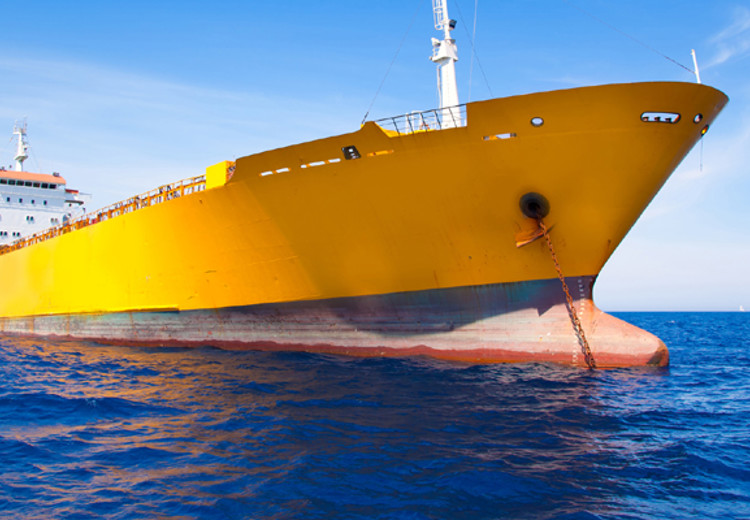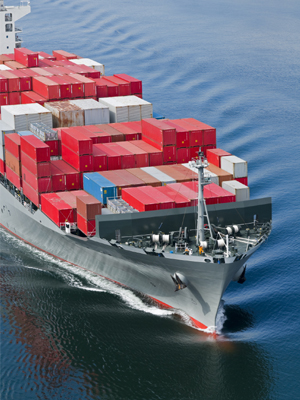Marine engines
Unlocking the full potential of methanol
16 April 2024
14 September 2016
Tightening emissions regulations impact marine cylinder lubricant formulations

The introduction of tighter emissions regulations is driving change to fuel and hardware selection, something that is sending ripples right across the marine industry. John Smythe, Marine and Large Engines Technical Advisor, explains how marine lubricants are responding to the challenges presented by the increasingly diverse marine fuel mix.
The question is when, not if, the global sulphur cap will be lowered from 3.5% to 0.5%. But, regardless of whether this takes place in 2020 or 2025, the marine industry has its work cut out to ensure it is ready to comply.
Infineum has been working hard to ensure cylinder oils will continue to deliver sufficient engine protection – no matter what hardware and fuel combination vessel operators ultimately select.
To comply with sulphur emissions regulations there are two key approaches. Vessels can use a single fuel, either running entirely on high sulphur fuel with an exhaust gas scrubber, or on low sulphur fuel. Alternatively, vessels can switch from the use of low sulphur distillate fuel, liquid natural gas (LNG) or one of the new ‘hybrid’ fuels in emission control areas (ECAs) to high sulphur residual fuel in international waters.
The key drivers impacting this decision include the high cost and low availability of low sulphur marine diesel, lack of investment in LNG infrastructure and the significant improvements that have been made in scrubber technology. It looks likely that developments in these areas mean heavy fuel oil (HFO) will remain the fuel of choice for most low-speed ships. However, depending on vessel type and service, we can expect to see all possible options in use.
Meeting the new, wider reaching, sulphur emissions targets will clearly impact the future fuels mix, which will, in turn, affect the formulation of lubricants for low speed engines.
If, as seems likely, HFO and scrubbers are predominantly used, lubricants with high base number (BN) will be needed to ensure the acids produced are effectively neutralised to prevent corrosion. While adding more base is clearly a good way to neutralise these acids, high BN lubricants produce much more ash, which can cause scuffing and liner damage.
It is essential to develop lubricants that carefully balance BN and ash to deliver sufficient acid neutralisation while maintaining the cleanliness of the piston assembly.

If large ships adopt a two-fuel approach, there couldbe a need for different cylinder oils to handle theconditions inside and outside ECAs
Alternatively, if there is a shift to low sulphur distillates to meet the global 0.5% sulphur target, major adjustments in fuel supply patterns will be required and significant quantities of residual fuel may need to be switched to distillate type molecules. These low sulphur distillates are already used widely in medium speed engines and low base number lubricants have been designed specifically to provide sufficient hardware protection.
If large cargo and container vessels adopt an approach that requires two fuels, a need could arise for different cylinder oils to handle the conditions inside and outside of ECAs. Out at sea high BN oil would still be required for use with HFO. But, when ships switch fuels in ECAs, the continued use of high BN oil could result in the formation of deposits, particularly around the piston rings and grooves.
Inside ECAs the lubricant must combine low BN and cleanliness – something that can be best achieved with oils of 40 BN or less. In addition, the use of low sulphur diesel demands lubricants that can deliver improved wear control and better combustion performance, while the use of LNG requires advanced corrosion and wear protection. This means when two fuels are used, the ship would not only change from HFO to low sulphur fuel inside ECAs, but also switch lubricant or custom blend the oil on board – both of which have drawbacks.
The impacts of the changing fuels mix clearly go way beyond BN selection.
As the shipping industry faces the challenges of escalating costs and increasingly stringent environmental regulations, at a time of reduced demand, ship owners and operators are looking for ways to improve efficiency and reduce operating costs. Two of the options being adopted are investments either in new engines with longer piston strokes, or in engine modifications to allow low-load operation for existing engines – also known as slow steaming. Although these strategies reduce fuel consumption, they can result in cold corrosion.
The newer long stroke engines consume less fuel for the power produced, but are more prone to cold corrosion.
During slow steaming the cooler cylinder walls allow more water to be produced. The water reacts with sulphur dioxide in the combustion gases leading to the formation of sulphuric acid and results in increased corrosive wear of the cast iron liners.
You might think that the wider use of lower sulphur fuels could help to reduce the occurrence of cold corrosion. Unfortunately, that would not be the case. Even if vessels opt to run entirely on low sulphur fuels, a significant amount of acid can still be produced. This means that no matter what fuel is selected, cold corrosion can still occur, to a greater or lesser extent.
100 BN oils are being recommended for these new long stroke engines, with work underway to evaluate the performance of 140 BN oils. While the use of high BN oils can control cold corrosion, Infineum is currently working on new ways to prevent it.
By using advanced components more efficient lubricants are being formulated, which are capable of delivering excellent acid neutralisation without going to 100 BN.
However, in our view, ship operation is also a big factor here. By running engines closer to the optimum design point, installing additional hardware, such as turbocharger cut outs, and by matching the lubricant to the fuel type operators can also help to prevent cold corrosion.
A single lubricant, designed to cope with slow steaming and widely varying fuel sulphur levels would clearly have value in this increasingly cost conscious world. But, as sulphur levels continue to fall, this ‘one size fits all’ approach is becoming increasingly difficult to achieve. And, experience to date suggests that, as more fuel options become available, OEMs will typically recommend engine lubricants that are suitable for the most severe fuel in use. In our view, the best approach here is to develop advanced cylinder oils with balanced formulations and match them to the engine and fuel type.
The decision on whether the global sulphur cap will be cut in 2020 or 2025 is subject to a review of the availability of compliant fuel. This is a complicated task, which must estimate future trends including marine fuel demand, scrubber uptake, LNG availability and low sulphur capacity.
Whatever the timing of the sulphur cut, it is clear that it will have far-reaching impacts on the entire marine industry.
Infineum is involved in a number of projects with OEMs, ship operators and with fuel and lubricant producers to ensure products, which meet the requirements of all stakeholders, are co-engineered in time to meet these regulatory challenges.
Sign up to receive monthly updates via email